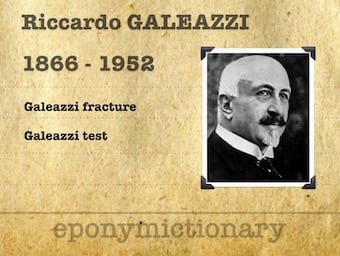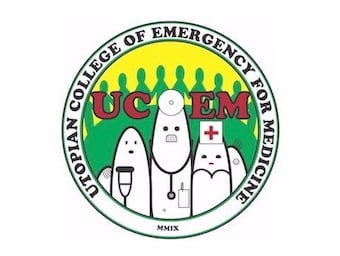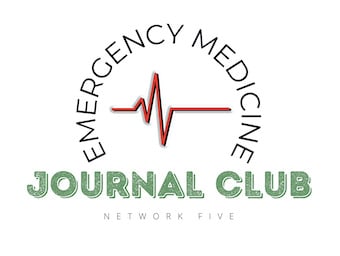
José Luis Bado
José Luis Bado (1903 – 1977) was a Uruguayan surgeon. Eponymously linked to the Bado classification of Monteggia fractures.

José Luis Bado (1903 – 1977) was a Uruguayan surgeon. Eponymously linked to the Bado classification of Monteggia fractures.

Riccardo Galeazzi (1866-1952) was a pioneering Italian orthopaedic surgeon. The eponymous Galeazzi fracture is named after him.

Giovanni Battista Montéggia (1762-1815) was an Italian surgeon. Eponym: Monteggia fracture (1812) ulna fracture, radial head dislocation

Galeazzi fracture (1934). Fracture of the distal third of the radius with associated Distal radio-ulna joint (DRUJ) disruption.

Sternal fractures and dislocations. Adult Orthopedic case interpretation with Carrie Bissell, Aaron Fox, Stephanie Jensen, Kendrick Lim and Olivia Rice

Egerton Y Davis IV unveils the latest guidelines to be produced by UCEM, the much anticipated Guidelines for Orthopedic Surgery.

Robert William Smith (1807 - 1873) was an Irish Surgeon. Eponymously affiliated with the Smith Fracture. Performed autopsy on Colles

Native Hip Dislocations. Adult Orthopedic case interpretation with Carrie Bissell, Ainsley Bloomer, Aaron Fox, Andrew Rees and Kendrick Lim

December 2022; Elbow injuries. Pediatric Orthopedic case interpretation with Haley Dusek, Danielle Sutton, and Virginia Casey

Pelvic ring injuries. November 2023 Adult Orthopedic case interpretation with Carrie Bissell, Aaron Fox, and Kendrick Lim

The Fractures App is yet another fantastic, simple and effective bedside app created by Tom Fadial and Spencer Tomberg

Network Five Emergency Medicine Journal Club Episode 22 - Orthopaedics reviewing papers on vascular injuries from knee dislocations, distal radius fractures and all things pelvic binders!